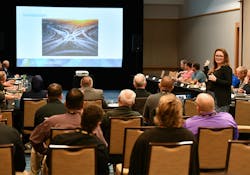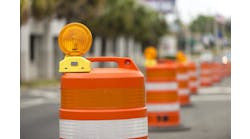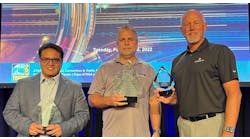When Juan Arvizu joined the American Traffic Safety Services Association (ATSSA) in 1998, he knew the organization primarily as the top provider of training for traffic safety professionals. Over two decades of membership later, and the Senior Director of Business Development at Road Safety Services, has seen firsthand the wide range of benefits associations like ATSSA can bring to members and the entire industry.
“As I got more involved in the association, I came to learn that they were the leading voice when it came to roadway safety,” he said.
In addition to offering valuable training and certification opportunities, ATSSA gives members like Arvizu the chance to network with peers, stay informed on the latest innovations, create change on Capitol Hill and ultimately move the industry forward.
Member Benefits
With 28 chapters across the country offering close to 100 meetings and events throughout the year, ATSSA provides consistent opportunities to connect with like-minded professionals.
“Our members are the backbone of the roadway safety infrastructure industry,” said Pamala Bouchard, ATSSA director of member engagement. “Not only is it an opportunity to connect with other key industry leaders who share common interests and goals; members also benefit from training, legislative advocacy and the resources to make roadways safer through its vast network of stakeholders.”
For Stephanie Boileau, ATSSA Michigan Chapter President and Chippewa County Road Commission County Highway Engineer in Michigan, ATSSA has opened doors to invaluable relationships with peers across the country. As an early-career professional, she has been able to bounce ideas off of connections she’s made at regular chapter meetings, fundraising events and annual conventions.
She was drawn to ATSSA membership after experiencing the loss of two friends in work zone crashes by the time she was 25. ATSSA trainings gave her more confidence and tools for navigating work zone risks, and her involvement with the association grew from there.
Serving as the chapter president in Michigan for the last two years has helped to increase the visibility of Boileau’s rural county, where making industry connections and securing funding can be a challenge.
“Having those connections translates into bringing dollars into your community and bringing new technologies that will save lives in the community,” she said. “You can't pass that up.”
Power in Numbers
While associations like ATSSA connect individuals to a wealth of helpful resources and peers, those connections also help to move the entire industry forward.
For Boileau, one of her chapter’s main initiatives has been external engagement with contractor associations, DOTs, and other industry stakeholders in the work zone safety realm.
“We're sharing talent, we're sharing brain power and when there's an issue that we feel strongly about, we can all come together on it,” Boileau said.
The initiative most near and dear for many members is government advocacy around work zone safety. With the help of ATSSA’s government relations team, members have the unique opportunity to connect with legislators at the national, state and local level. Organized events like the annual Fly-In to Washington, D.C. allow members to meet with federal policymakers and advocate for funding, technology and other industry needs with a uniform voice.
Arvizu, who was previously ATSSA’s chairman and now serves on the Board of Directors, values being part of an association that truly cares about roadway safety and the motoring public.
“From a personal sense, it is a rewarding feat to be able to shape the course of roadway safety across the country,” he said.
One national ATSSA initiative Boileau is excited to be a part of is the Roadway Worker Protection Council, which was founded last year to focus on mitigating work zone risks. Given the alarming rise in traffic fatalities and distracted driving in recent years, Boileau said the industry is standing at a critical crossroads to turn these trends around.
“We're definitely better together. Our best ideas will come from the best minds in the country getting together and debating policies, operating procedures, specifications, and new technologies, and working together to get to our best possible solution,” she said.
Ultimately, the roadway safety industry wouldn’t be what it is today without the structure and connection offered by associations like ATSSA. As the industry works Toward Zero Deaths, associations help to drive that progress forward.
“A rising tide lifts all boats,” Bouchard said. “An association creates a network for shared concerns to be addressed and ideas for common solutions to be applied. An association can affect change at the local, state and national levels. There’s real power in numbers.”
For more information on ATSSA membership, visit ATSSA.com/MemberBenefits.



